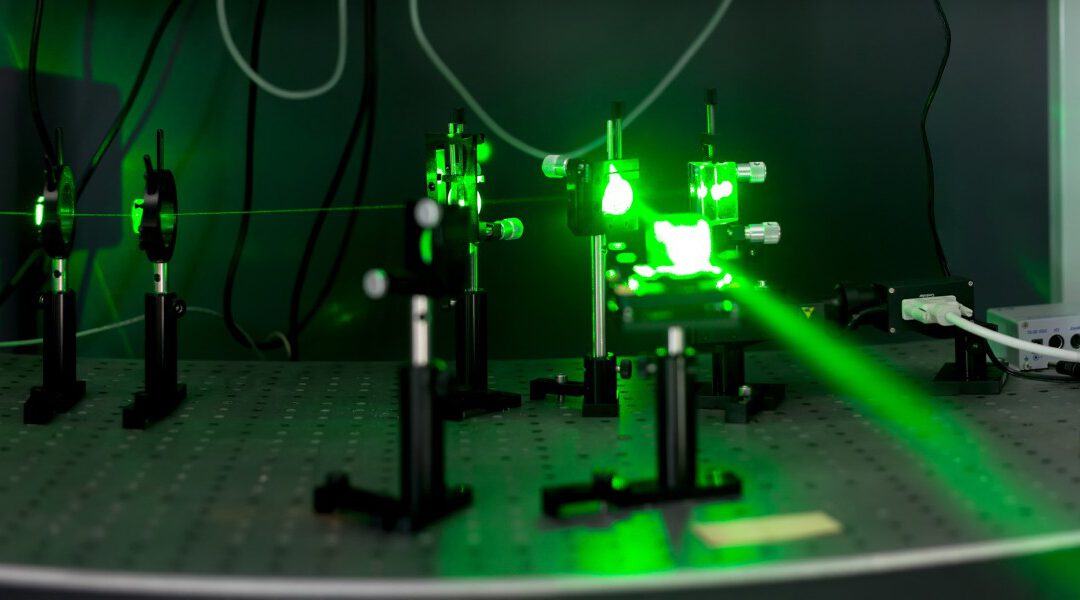Unraveling the Journey of Light through Specialty Multimode Fibers. If you wonder what is essential in Multimode fiber manufacturing. You can learn a bit more about fibers.
Light is not just a phenomenon; it is the very essence of all life and knowledge.” – Albert Einstein
Albert Einstein’s profound words remind us of light’s intrinsic significance in the universe. In this article, we embark on a journey to explore the intricate transmission of light through specialty multimode fibers. We will delve into the fundamental aspects of light, its behavior within fiber cores, the vital role of the refractive index, and the calculation of the numerical aperture.
Understanding Light:
Light, a form of electromagnetic radiation, encompasses a wide range of wavelengths, each defining the unique properties of visible colors, infrared, ultraviolet, and more. As a wave-particle duality, light travels in a straight line until it encounters a medium with a different refractive index, altering its path and behavior.
Light Distribution in Fiber Core:
In specialty multimode fibers, the core is the central region where light propagates. Unlike single-mode fibers, multimode fibers support multiple modes of light, allowing various paths for transmission. The core diameter is pivotal in determining the number of supported modes, with larger cores accommodating more modes.
Importance of Refractive Index:
The refractive index (n) is a critical parameter dictating how light interacts with a medium. It determines the speed of light in the medium, affecting its bending and angle of propagation. A controlled refractive index profile (Δn) is created between the core and cladding to enable efficient light transmission in specialty multimode fibers, ensuring that light remains confined within the core.
- Light Guidance: The refractive index gradient between the core and cladding enables light to be confined within the core. This controlled guidance ensures light travels along desired paths, preventing signal loss and minimizing dispersion.
- Modal Dispersion: In multimode fibers, light travels through multiple modes simultaneously. The refractive index governs the propagation velocity of each mode, affecting the modal dispersion. Reducing modal dispersion is crucial for high-speed data transmission.
- Numerical Aperture (NA): As mentioned in the previous response, the numerical aperture is a function of the refractive indices of the core and cladding. A higher NA allows more light to be coupled into the fiber, enhancing light-gathering efficiency.
- Bandwidth and Signal Quality: A well-designed refractive index profile ensures a wide bandwidth, transmitting diverse wavelength signals with minimal distortion, resulting in high-quality data transmission.
Silica fibers are predominantly used in telecommunications and scientific applications requiring low signal loss. The refractive index of silica glass can be modified through fluorine doping to optimize light transmission.
To calculate the refractive index (n) of silica/silica fluor-doped fibers, we consider the core refractive index (n_core) and the cladding refractive index (n_cladding). The index difference (Δn) between the core and cladding is a key parameter to ensure adequate light confinement.
Germanium-doped fibers are used for their enhanced infrared transmission properties. Adding germanium oxide (GeO2) increases the refractive index, making it suitable for specialized applications in the infrared region.
To calculate the refractive index (n) of germanium-doped fibers, we again consider the core refractive index (n_core) and the cladding refractive index (n_cladding), with the index difference (Δn) defining the fiber’s optical characteristics.
Calculating Numerical Aperture (NA):
The numerical aperture is a crucial parameter characterizing a fiber’s light-gathering ability. It is determined by the refractive index of the core (n_core) and the cladding (n_cladding) and is calculated using the formula:
NA = √(n_core^2 – n_cladding^2)
Numerical Aperture Values:
For example, consider a specialty multimode fiber with a core refractive index (n_core) of 1.483 and a cladding refractive index (n_cladding) of 1.457:
NA = √(1.483^2 – 1.457^2)
NA = √(2.199289 – 2.119249)
NA = √0.08004
NA ≈ 0.283
Light’s journey through specialty multimode fibers is a captivating blend of physics and engineering. Understanding light’s behavior within the core, the significance of refractive index, and calculating numerical aperture empowers us to optimally design and utilize these fibers. As we continue to unravel the mysteries of light, we open up boundless possibilities for innovation and exploration in fiber optics.

